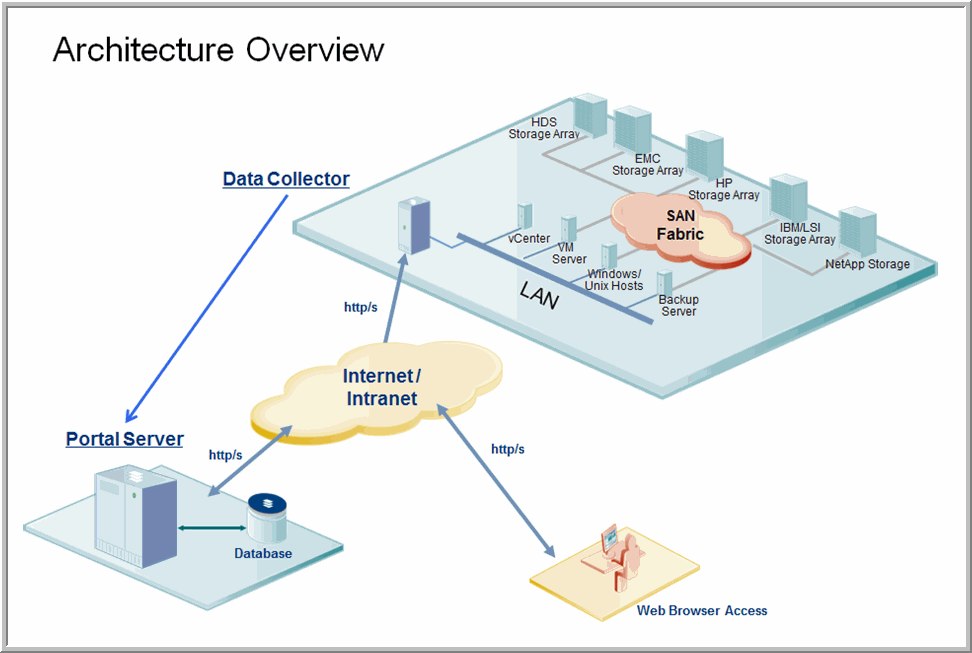StorageConsole Components
When you install APTARE StorageConsole, you are installing the following components:
• Portal Server. The physical server on which the StorageConsole Portal Server software resides.
• Portal Server Software. The APTARE binaries, SQL scripts, configuration files, and open-source and third-party software products needed to retrieve and render reporting data from the Reporting Database.
• Reporting Database. The Oracle 11g database stores all report data. The Reporting Database is usually installed on the Portal Server, but you can just as easily install it on a separate server, preferably a dedicated database server. These binaries are installed during the first step of the installation procedure.
• Data Collectors. The software that collects report data about your backup servers and storage arrays. The Data Collector is usually installed on a separate server.
Because of the relationship between the Portal Server, the Portal Server software, and the Reporting Database, you need to install these Portal Server components at the same time. However, you can install the Data Collector separately.

Portal Server Software
When you install Portal Server software, you install a compilation of software:
• Open-Source and Third-Party Software to provide framework components.
• APTARE binaries to provide APTARE StorageConsole its intelligence and functionality. These binaries include the Portal engine, the Data Receiver, and stored procedures.
• The Portal engine drives the Portal user interface.
• The Data Receiver accepts data from the Data Collector, then saves the data to the Reporting Database.
• The stored procedures retrieve data from the Reporting Database, input data into the Reporting Database, and perform calculations and analysis.
• Database SQL Scripts to instruct the Oracle SQL scripts to create StorageConsole’s object module and database schema.
Reporting Database
The Reporting Database stores all report data (as metadata) that it receives from the Data Receiver. You can install the Reporting Database on a standalone server or on the same server as the Portal Server. The preferred configuration is to have the database on the same server as the Portal. If you use a Managed Services Provider, the Reporting Database and Portal Server are usually off site and hosted by that third-party provider.
APTARE StorageConsole manages data in the Reporting Database with automatic purging scripts that run, with specific retention periods per product and even data type. Some reports are more valuable when they have access to historical data. Because the Reporting Database only stores metadata, the amount of data on the Reporting Database is relatively small (GBs).
Data Collectors
A Data Collector is a centralized and remotely managed data collection mechanism. This Java application is responsible for interfacing with enterprise objects, such as backup servers, storage arrays, and switches, gathering information related to storage backup and recovery, and capacity management.
The Data Collector continuously collects data and sends this data, using an http or https connection, to another Java application, the Data Receiver. The Data Receiver runs on the Portal Server and stores the data that it receives in the Reporting Database. When you use the Portal to generate a report, the Portal requests this information from the Reporting Database, then returns the results in one of the many available reports.
The Data Collector obtains all of its monitoring rules from a Data Collector Configuration File. This file resides in the Reporting Database in XML format. When the Data Collector first starts, it downloads this file from the Reporting Database. The Data Collector uses this file to determine the list of backup servers, hosts, or storage arrays that are to be monitored and included in its data collection process.
A single installation of the Data Collector supports any number of servers. The only real limitation is the memory and CPU processing power of the server on which the Data Collector resides.




